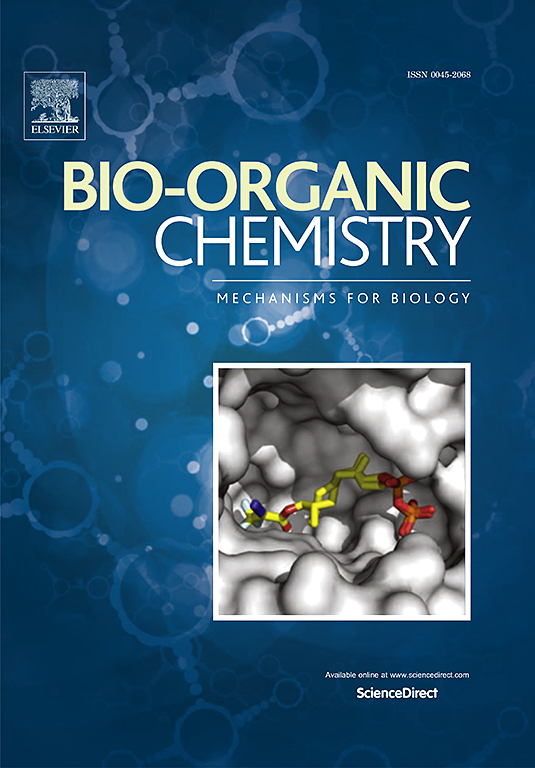Hydroxychavicol derivatives from Piper betle Linn. as natural PDE4 inhibitors with anti-inflammatory effects
IF 4.5
2区 医学
Q1 BIOCHEMISTRY & MOLECULAR BIOLOGY
引用次数: 0
Abstract
PDE4 inhibitors have been developed as anti-inflammatory medications primarily used in the clinical treatment of pulmonary inflammations such as asthma, chronic obstructive pulmonary disease, and idiopathic pulmonary fibrosis. However, the application of these drugs is usually restricted by obvious side effects, such as nausea and vomiting. Our previous study found that several natural PDE4 inhibitors or their modified derivatives showed minimal side effects, particularly reduced incidence of nausea and vomiting, which aroused our interest in searching for natural PDE4 inhibitors. In this study, a chemical investigation of an active fraction of Piper betle L. leaves led to the characterization of 23 hydroxychavicol derivatives, including 18 hydroxychavicol-type lignans. Compounds 1–9 were new lignans, with three of them being racemates that were eventually resolved into isolated (+)- and (−)-enantiomers. Compounds 1–5 and 10, neolignans characterized by a dioxane moiety, were unique to this species within the genus Piper. Compounds 5 and 10 were the sole sesquineolignans found in the genus Piper. Compounds 5, 7–14, 16, 17, and 21 exhibited considerable inhibition towards PDE4 with IC50 values ranging from 1.8 to 10 μM, with hit 7 exhibiting remarkable activity (1.8 μM). Further anti-inflammatory assays revealed that compounds 5, 7, 9, and 16 decreased the expression of several key inflammatory mediators in LPS-stimulated RAW 264.7 cells. Notably, 16 was comparable to the positive control rolipram at the same concentration of 10 μM. A primary study of the mechanism of action revealed that 16 may exert anti-inflammatory effect by inhibiting the NF-κB signaling pathway, displaying significant inhibition of the phosphorylation of IκB-α and p65 at concentrations of 5 and 10 μM. These findings suggest that hydroxychavicol derivatives from P. betle L. leaves may serve as new PDE4 inhibitors, offering promising leads for the development of anti-inflammatory medications.

求助全文
约1分钟内获得全文
求助全文
来源期刊

Bioorganic Chemistry
生物-生化与分子生物学
CiteScore
9.70
自引率
3.90%
发文量
679
审稿时长
31 days
期刊介绍:
Bioorganic Chemistry publishes research that addresses biological questions at the molecular level, using organic chemistry and principles of physical organic chemistry. The scope of the journal covers a range of topics at the organic chemistry-biology interface, including: enzyme catalysis, biotransformation and enzyme inhibition; nucleic acids chemistry; medicinal chemistry; natural product chemistry, natural product synthesis and natural product biosynthesis; antimicrobial agents; lipid and peptide chemistry; biophysical chemistry; biological probes; bio-orthogonal chemistry and biomimetic chemistry.
For manuscripts dealing with synthetic bioactive compounds, the Journal requires that the molecular target of the compounds described must be known, and must be demonstrated experimentally in the manuscript. For studies involving natural products, if the molecular target is unknown, some data beyond simple cell-based toxicity studies to provide insight into the mechanism of action is required. Studies supported by molecular docking are welcome, but must be supported by experimental data. The Journal does not consider manuscripts that are purely theoretical or computational in nature.
The Journal publishes regular articles, short communications and reviews. Reviews are normally invited by Editors or Editorial Board members. Authors of unsolicited reviews should first contact an Editor or Editorial Board member to determine whether the proposed article is within the scope of the Journal.
 求助内容:
求助内容: 应助结果提醒方式:
应助结果提醒方式:


